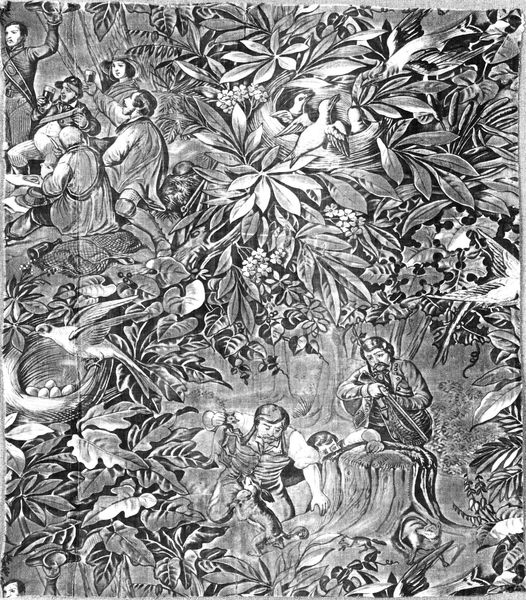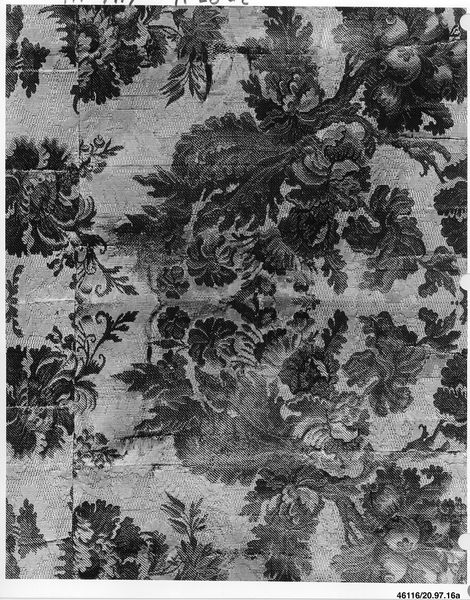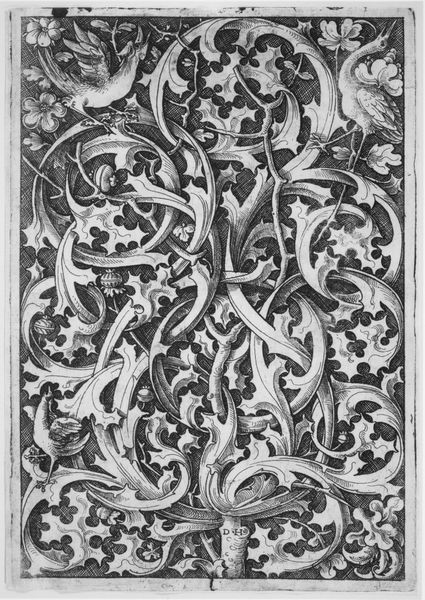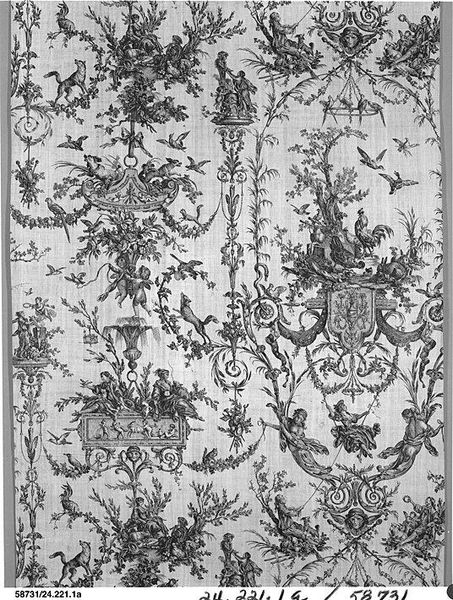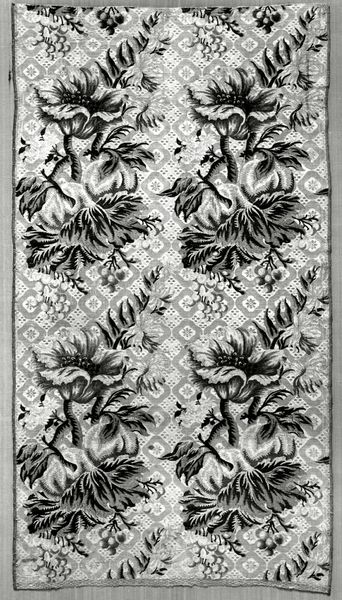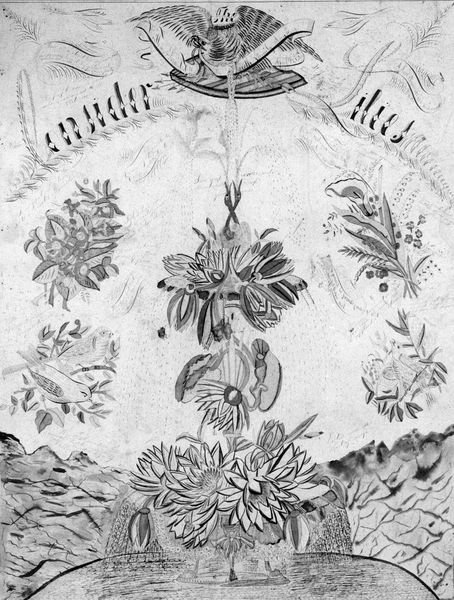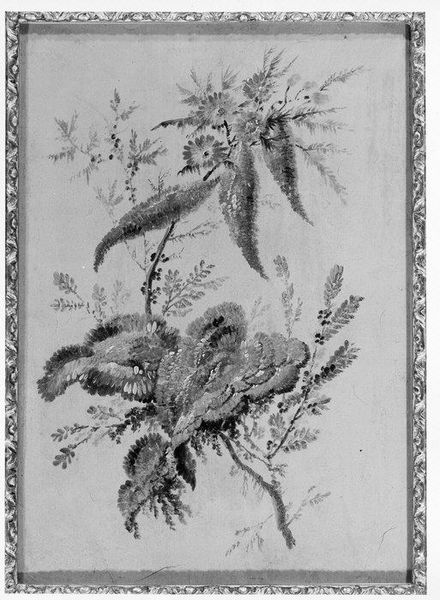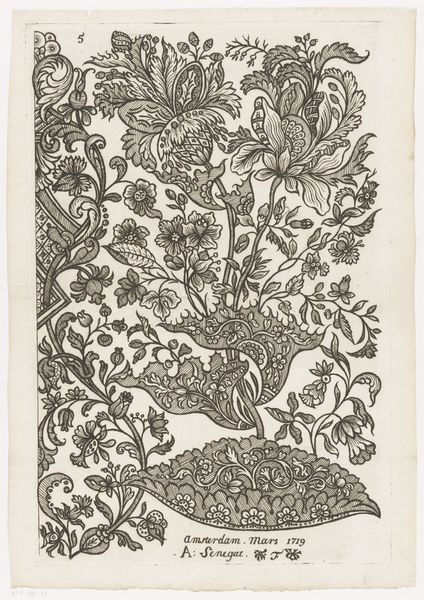
Dimensions: 33.7 × 36.2 cm (13 1/4 × 14 1/4 in.)
Copyright: Public Domain
Curator: This piece is a textile panel dating from around 1815. It's currently held in the collection of The Art Institute of Chicago. Editor: My first impression is that this design feels quite dense. It is full of busy foliage surrounding what seems to be a pair of birds. The contrast is very sharp, and that heightens the intricate details. Curator: It's a fantastic example of early 19th-century English textile design, really embodying that romantic sensibility of the period. One has to appreciate the craft and skill involved in the printing of such intricate patterns onto fabric. Editor: Agreed. The design relies heavily on symmetry and repetition but its visual impact also results from its subtle irregularities and deviations in form. Look at the almost haphazard way in which those berries are depicted around the tops of the trees. It strikes me as organized chaos. Curator: Indeed. Think about the social context – this panel was likely part of a larger scheme to decorate a domestic interior. The imagery evokes a sense of idealized nature, a romantic vision that resonated strongly with the aspirations of the British upper classes in that era. Textiles had tremendous cultural significance. Editor: Precisely. These sorts of natural themes, birds, botanical elements – the almost abstracted depictions really played into Romantic-era desires to highlight organic life. And, visually, the intertwining branches, petals, and feathers, all flowing seamlessly. It definitely lends the textile a unique formal harmony and decorative dynamism. Curator: Thinking of the textile medium, the texture certainly added another layer of sensory appeal to such printed decor. Textiles invited viewers into another space, evoking a tactile experience integral to its reception, to how these interiors shaped experience in the era. Editor: Absolutely. This panel serves both aesthetic and social roles. It's intriguing to consider how it embodies ideas about nature and domesticity in 19th-century England. Its complex composition still manages to inspire thoughts about Romantic-era notions of idyllic landscapes. Curator: It's been a privilege to examine this panel's contribution, offering both insights into 19th-century aesthetic sensibilities and a material artifact reflecting British cultural history.
Comments
No comments
Be the first to comment and join the conversation on the ultimate creative platform.

